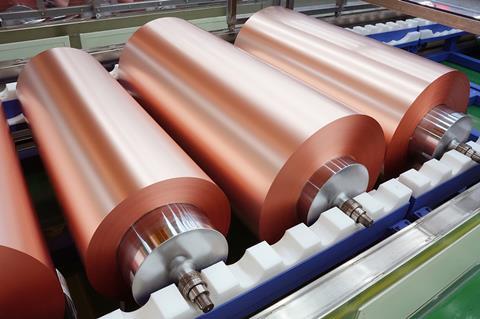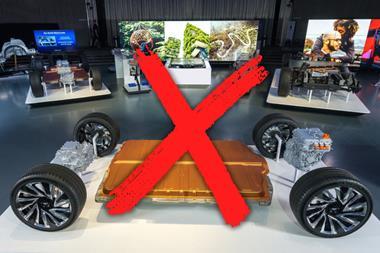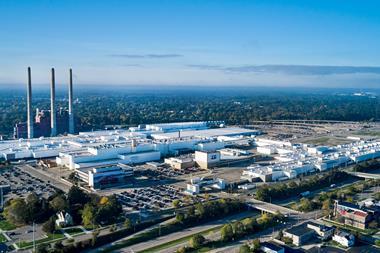General Motors and Samsung SDI have cemented a $3.5 billion agreement to establish an advanced EV battery manufacturing plant in Indiana. This facility will enhance GM’s EV production capabilities by delivering up to 36 GWh of prismatic battery cells annually.

Samsung SDI, a key player in South Korea’s battery manufacturing sector, and Li-Ion battery and renewable energy giant, has formalised a significant partnership with General Motors (GM) to establish a joint electric vehicle (EV) battery manufacturing plant in Indiana, USA.
“The plant will have the capability to expand up to 36 GWh, building prismatic cells”
- Kurt Kelty, GM’s Vice President of Battery Cell and Pack
The project represents a combined investment of approximately $3.5 billion to construct a cutting-edge battery cell manufacturing facility with an initial annual production capacity of 27 gigawatt hours (GWh). Samsung SDI’s announcement follows an initial projection in April 2023, which estimated the plant’s capacity at 30 GWh and operations to begin in 2026. The updated plan now anticipates that production could scale up to 36 GWh annually by 2027.

Kurt Kelty, GM’s Vice President of Battery Cell and Pack, commented on the significance of the collaboration, stating: “The plant will have the capability to expand up to 36 GWh, building prismatic cells, which will be added to our battery technology portfolio, helping us to continue to increase performance and lower costs in the future.”
This focus on prismatic cells is part of a broader resurgence in the use of prismatic battery technology, which is gaining favor due to its durability and enhanced safety features. Prismatic cells are becoming increasingly popular among leading manufacturers as they provide several advantages, including better resistance to external shocks and improved cost efficiency in production.
Backgrounds: Lotte Energy secures copper foil supply deal for Samsung SDI-Stellantis JV ’StarPlus Energy’
In a recently announcement, Samsung SDI has selected Lotte Energy as the exclusive supplier of copper foil for its joint venture with Stellantis, StarPlus Energy, in the United States. The decision is part of Samsung SDI’s efforts to enhance its production capabilities and supply chain reliability for the critical materials required in lithium-ion battery production.

The copper foil, which passed stringent quality tests, will support the JV’s first battery plant in Indiana, now set to open earlier than initially planned to leverage the benefits of the Inflation Reduction Act (IRA). The early opening is aimed at securing US government subsidies designed to promote domestic EV production.
This partnership is significant as it aligns with Samsung SDI and Stellantis’s broader goals of scaling up their EV battery manufacturing capacities in North America. The Indiana plant is one of two major battery plants under development by the JV, with the second plant expected to be operational by 2027 with a capacity of 34 GWh.
The collaboration reinforces the production infrastructure and supply chain for Samsung SDI and positions Lotte Energy for growth, as the demand for high-quality battery materials in the US market grows alongside the expansion of EV manufacturing.
The GM-Samsung SDI Indiana partnership is an important component of GM’s strategy to overcome recent challenges in scaling its EV production. GM has faced delays related to its Ultium battery technology, which has impacted the production of key models like the Cadillac Lyriq and BrightDrop vans. The new Indiana plant is expected to alleviate some of these production bottlenecks by providing a more reliable and locally sourced supply of advanced battery cells.
The venture signals the companies’ focus on expanding its footprint in the North American EV market, and aligns with broader industry trends towards localising battery production to secure battery production and supply chains.
Despite reducing its 2024 EV production forecast from 300,000 to 250,000 units, GM remains committed to its electrification goals. The Indiana facility, by bolstering battery supply, will be instrumental in supporting GM’s push to increase the performance and affordability of its next-generation EVs.






































No comments yet